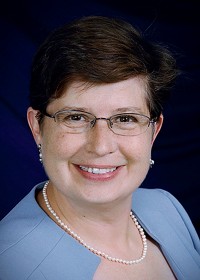Advertisement
Grab your lab coat. Let's get started
Welcome!
Welcome!
Create an account below to get 6 C&EN articles per month, receive newsletters and more - all free.
It seems this is your first time logging in online. Please enter the following information to continue.
As an ACS member you automatically get access to this site. All we need is few more details to create your reading experience.
Not you? Sign in with a different account.
Not you? Sign in with a different account.
ERROR 1
ERROR 1
ERROR 2
ERROR 2
ERROR 2
ERROR 2
ERROR 2
Password and Confirm password must match.
If you have an ACS member number, please enter it here so we can link this account to your membership. (optional)
ERROR 2
ACS values your privacy. By submitting your information, you are gaining access to C&EN and subscribing to our weekly newsletter. We use the information you provide to make your reading experience better, and we will never sell your data to third party members.
Comment
Comment: Addressing challenges to advance sustainable chemistry
by Adelina Voutchkova, ACS director of sustainable development
April 18, 2024
| A version of this story appeared in
Volume 102, Issue 12
Because the Green Chemistry Institute (GCI) Advisory Board is changing chairs, former chair Kathryn Beers invited Adelina Voutchkova, ex officio member of the advisory board and director of sustainable development at the American Chemical Society, to write this Comment.

In 2021, the passing of the Sustainable Chemistry Research and Development Act mandated the National Science and Technology Council (NSTC) to develop a comprehensive strategy for advancing sustainable chemistry. In August, the Sustainable Chemistry strategy team of the NSTC released a state-of-science report titled Sustainable Chemistry Report: Framing the Federal Landscape that provides an analysis of gaps and opportunities for the federal government.
After this report, the strategy team is expected to release a strategic plan outlining how the federal government can use these opportunities to address the identified gaps and the United Nations sustainable development goals (SDGs). Given that this year is the midway point of the SDGs’ 2030 timeline, it is notable that half the 140 targets are not on track, and 30% of targets are at or below the 2015 baseline values. The NSTC report emphasizes that solutions to sustainability challenges require an appreciation of interconnected systems—the most exciting innovations are emerging at the intersection of fields. The NSTC report stipulates that sustainable design concepts must not only reduce adverse effects on the environment and human health but also meet a societal function and promote economic development. While these stipulations set a high bar for academic research to meet, this approach is necessary for translating fundamental research to marketable products driven by economics, performance, and regulatory compliance.
The demand for green and sustainable chemistry calls for scientists from across multiple disciplines to collaborate in developing new chemistry, chemicals, and materials. Working in broad, interdisciplinary teams is imperative for progress in sustainable chemistry. This imperative should not dilute the deep expertise needed to make fundamental intellectual advances in a targeted field but rather complement it with a systems approach. The Office of Sustainability seeks to advance the goals outlined in the NSTC report by aligning current and future initiatives, as outlined below.
First, the report suggests that we must increase opportunities for interdisciplinary collaborations both with social scientists and across certain sectors. Such efforts start with initial collaborations between researchers in academia and industry—and there is a large untapped opportunity here in the US. Through the ACS Campaign for a Sustainable Future, we have recently instituted two new grants. One grant directly provides support for academic researchers to spend a sabbatical engaging in interdisciplinary research in an industrial group, and the other supports early-career research in sustainable chemistry geared to application to the UN SDGs.
Second, the report stipulates that building sufficient awareness in areas that relate to sustainability is practical and beneficial for chemists. Basic awareness would introduce the main ideas and vocabulary that allow for productive conversations between experts in different fields. The NSTC report identifies three strategic research areas that are critical to chemists: life-cycle thinking, chemical toxicology, and process engineering—although this is not to be construed as an exhaustive list. As a first step to meeting this need, the ACS Green Chemistry Institute (GCI) plans to provide opportunities for workshops and other training on these topics at conferences and other meetings that are not cost prohibitive. Furthermore, we see a need to increase the portion of graduate programs that include green and sustainable chemistry in the US. Increasing the availability of graduate training opportunities, especially those that are affordable, will significantly expand the number of chemists trained in the systems-thinking approach to research, which is critical to making meaningful progress in sustainability.
Third, the report recognized a need to develop metrics that would enable different stakeholders to evaluate sustainable chemistry using a systems-level approach. Measurement tools and metrics should be standardized and harmonized across different sectors to minimize uncertainty in decision-making by stakeholders over the entire value chain, which is likely to increase the probability of commercial adaptation of sustainable chemistry activities. The GCI is exploring future engagement with government agencies and other stakeholders to address this critical challenge.
The second part of the NSTC Sustainable Chemistry Report is intended to engage academia, industry, government, and nongovernmental organizations to develop a road map for future sustainable chemistry activities of US federal agencies and their partners. Some research areas in sustainable chemistry are likely to be prioritized to address immediate economic, environmental, and social challenges. Therefore, it will be imperative for the GCI and the research community to be involved in these stakeholder discussions, positioned to adapt to new technologies, and aware of the evolving norms in standardized reporting.
Views expressed are those of the author and not necessarily those of C&EN or ACS.





Join the conversation
Contact the reporter
Submit a Letter to the Editor for publication
Engage with us on Twitter